Patagonia Surfing: The Ultimate Destination for Wave Riders
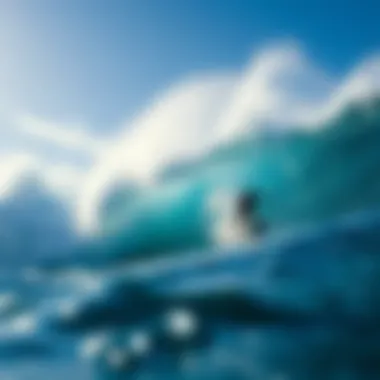
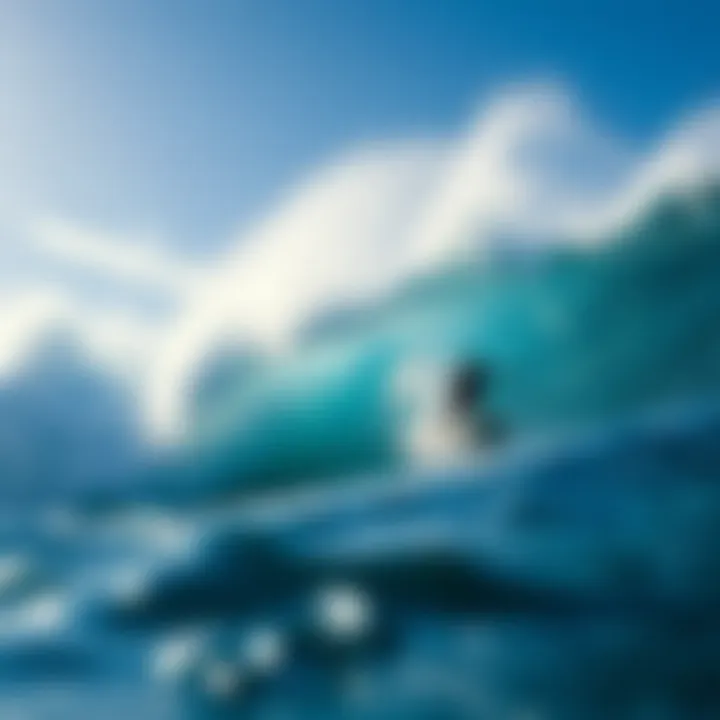
Intro
Patagonia, known for its breathtaking landscapes and robust natural beauty, has quietly emerged as a thrilling surfing haven. This rugged region, located in the southern parts of Chile and Argentina, is famed not only for its stunning fjords and towering mountains but also for its diverse range of surfing conditions. Embracing both the Atlantic and Pacific coasts, Patagonia offers surf breaks that cater to every type of surfer—from novices teetering on their first waves to seasoned pros hunting for that perfect barrel.
However, what truly sets Patagonia apart is its ever-changing climate and geography. The consistent winds create a range of wave types that make it a unique challenge for surfers. The cultural richness of the locals adds another layer, providing insights into the importance of sustainability and community. In this article, we dive into what makes Patagonia a prime destination for surfers, exploring the best surf spots, essential techniques, and the equipment needed for an unforgettable experience.
Prepare for an adventure that not only pushes your surfing limits but also connects you to a thriving community that cherishes its environmental heritage.
Surfing Techniques
Beginner Tips for Getting Started
For those who have recently caught the surfing bug and are ready to take on the waves of Patagonia, starting with the basics is crucial. Begin with the right mindset: patience and practice will take you far. It's wise to start on a soft-top board, which is wider and more buoyant—making it easier to balance. Consider taking a lesson from a local surf school, where instructors can provide invaluable insights into local conditions and safety tips.
Here are some handy pointers:
- Paddle Position: Lie flat on your board, ensure your body is centered, and use your arms to paddle efficiently. Aim for a strong, steady motion.
- Pop-Up Practice: On the beach, practice how to quickly transition from lying down to standing up. This technique is vital for catching those early waves.
- Wave Timing: Learn to observe the waves; it's all about knowing when to paddle and when to stand up. Timing will come with experience, so don’t rush it.
Advanced Maneuvers and Tricks
Once you’ve found your footing and are comfortable riding waves, the next step is to learn some advanced maneuvers. Patagonia’s surf spots present a variety of wave conditions that are perfect for honing your skills. For those experienced surfers looking to level up, consider these tricks:
- Cutbacks: This involves turning back towards the white water after heading away from the wave, allowing you to maintain speed and flow with the surf.
- Aerials: While challenging, they are exhilarating when executed correctly. Pick the right wave to launch off, keeping your center of gravity low.
- Carving: Practice deep turns that allow you to shift your weight on the board, enhancing speed and control.
With each trick, remember: practice makes perfect. Consider documenting your sessions to review and improve; gaining insights from fellow surfers can also be tremendously helpful.
Surfboard Selection
Choosing the Right Board for Your Style
Selecting the appropriate surfboard is of paramount importance. Patagonia’s waves can differ drastically; thus, you need a board that complements your skill level and the surf conditions. Generally, boards can be categorized into three types—shortboards, longboards, and fish boards.
- Shortboards: Ideal for experienced surfers looking for speed and maneuverability as they tend to work better in powerful conditions.
- Longboards: Perfect for beginners. They offer more stability and are easier to paddle, which helps in catching smaller waves.
- Fish Boards: Great for intermediate surfers, these boards are wider and shorter, helping navigate through choppy waters easily.
Surfboard Maintenance and Care
Once you've chosen your surfboard, keeping it in good shape is crucial for both performance and longevity. Regular maintenance goes a long way:
- Keep it Clean: Rinse your board after each session in saltwater to prevent damage.
- Repairs: Address dings and cracks promptly. Use repair kits if you're handy or take it to a professional.
- Storage: Always store your board in a cool, shaded place to minimize fading and avoid warping due to heat.
For more information on Patagonia, feel free to check out the Wikipedia page.
Prologue to Patagonia Surf
Patagonia is often regarded as a land of stunning contrasts, where nature's raw beauty meets thrilling adventure. The phrase "the end of the world" is not just a saying here; it embodies the spirit of the region. As surfers, discovering this slice of paradise is akin to finding a hidden treasure chest brimming with waves that break in exceptional ways. From the rugged coastlines to the mystical fjords, Patagonia offers a surfing experience that is rich not only in opportunities for quality rides but also in cultural immersion and environmental appreciation.
The importance of exploring Patagonia through a surfing lens is multifaceted. First and foremost, it provides an escape from the crowded beaches that often define mainstream surfing culture. Instead, surfers who venture to Patagonia can revel in the solitude that comes from having large stretches of untouched coast all to themselves. Beyond just the waves, there's the sense of community among those who share the passion for the ocean, often intertwined with a commitment to preserving the environment.
However, before grabbing your board and heading south, it’s necessary to consider a few pivotal aspects. Knowledge about local conditions, weather variability, and equipment suited for not only the waves but the climate is essential. Surfing there is not merely about catching waves; it includes respecting the land, its people, and the unique ecology that makes Patagonia a cradle of biodiversity. Navigating these elements effectively lays the groundwork for a fruitful surf experience.
The journey through this article will unravel the intricacies of Patagonia surf, guiding you from the heart of this incredible region down to its finest surf spots. You will learn about the diverse conditions that define the area, discover essential techniques tailored for varying skill levels, and gain practical tips for traveling there with ease. Moreover, it's crucial to engage with the underlying environmental issues and cultural aspects that enrich the surfing experience in Patagonia.
By diving deep into Patagonia surf, you are not just learning about surfing a wave; you are engaging in a lifestyle that cares about community and sustainability, making every ride not only thrilling but meaningful.
Geographical Diversity of Patagonia
Patagonia is not just a backdrop for your surfing adventure; it’s an indelible part of the experience itself. Known for its breathtaking landscapes, the geographical diversity of this region—spanning both Chile and Argentina—offers a myriad of surfing experiences that range from serene fjords to powerful ocean swells. For surfers, understanding the geographical nuances is paramount for maximizing their time on the waves while navigating the local conditions and terrain.
The unique geographical features of Patagonia contribute not only to different wave types but also to the breathtaking scenery surrounding the surf spots. Imagine gliding over azure waters while glaciers loom in the background. It's a surreal amalgamation of natural wonders that does more than enhance the surfing experience; it enriches the soul.
Coastal Landscapes
The coastal landscapes of Patagonia are a feast for the eyes, often showcasing rugged cliffs, lush forests, and golden sandy beaches. Each corner of this expansive region has its own natural beauty. The beaches along the coastline vary significantly, with some areas known for their dramatic rock formations while others present vast stretches of untouched sand. For instance, the picturesque shores of Punta de Lobos are characterized by steep, craggy cliffs juxtaposed against the expanse of the Pacific Ocean, creating a striking visual that draws surfers from all over the world.
Moreover, the specific geological features contribute to how and when waves break, creating a diverse surfing landscape that caters to both novices and seasoned surfers alike. As you explore the vast stretches of coastline, you might encounter hidden coves or isolated beaches. These often act as natural barriers against wind and currents, leading to optimal wave conditions.
Unique Wave Conditions
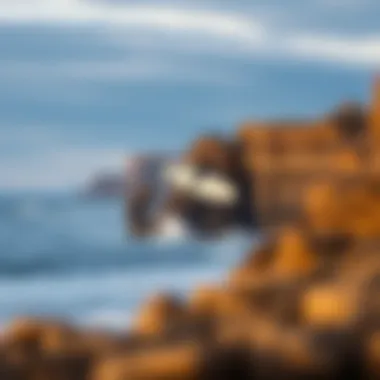
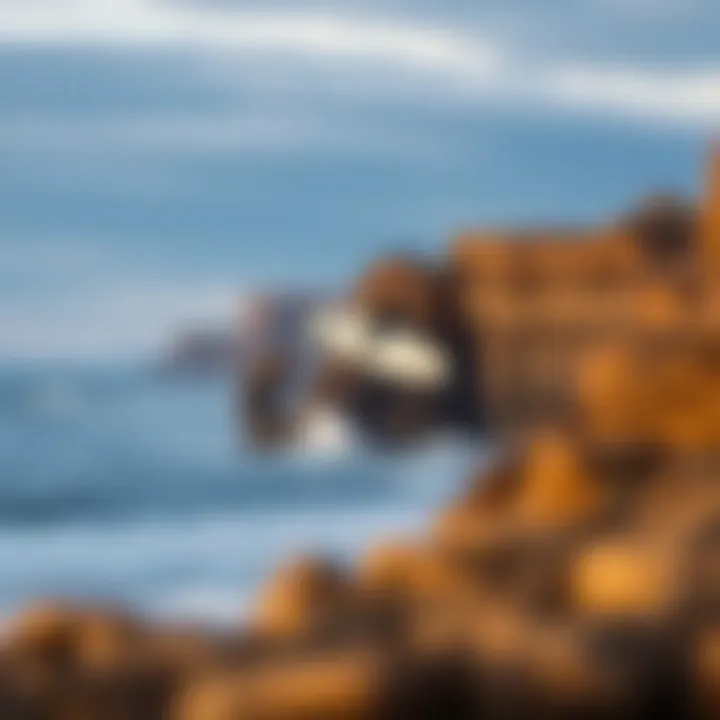
One of the captivating aspects of Patagonia’s surfing scene is its unique wave conditions. The region is known for its varied surf breaks—ranging from beach breaks to point breaks—each presenting a different challenge. Coastal currents driven by the Southern Ocean collide with the land's contours, sculpting waves that can either be gentle rollers or invigorating walls.
Surfers can expect to encounter everything from windswept, powerful swells to tranquil, gentle waves, depending on the specific location and daily conditions. Notably, during the winter months, the southern swells can generate impressive waves that attract advanced surfers eager to take on the challenges presented.
Additionally, the weather can be quite unpredictable in Patagonia, which means that surfers need to stay flexible and adaptable to changing conditions. This diversity is what makes surfing in Patagonia thrilling but also requires awareness and respect for the locale—from its ever-changing weather patterns to its cultural significance in surf history.
"Patagonia's surf spots constantly change, just like the wind and tides—they offer the unexpected. That’s the essence of adventure in this wild land."
From the coastal vistas to the dynamic surf conditions, the geographical diversity of Patagonia serves as a canvas for both the novice and proficient wave rider. Understanding the land and its waves is essential for any surfing adventure, making Patagonia an iconic destination that keeps surfing challenging and exhilarating.
Top Surf Spots in Patagonia
The rich and varied tapestry of surfing in Patagonia is intricately woven into its stunning landscapes and diverse wave conditions. This section explores some of the most sought-after surf spots in the region, each with its own unique characteristics and attractions. Understanding these locales is essential for any surfer hoping to make the most of their experience in this breathtaking corner of the world.
From challenging breaks that test even the most seasoned surfers to gentle waves perfect for beginners, Patagonia has it all. It’s not just about riding the waves; it’s about connecting with nature, discovering local culture, and embracing sustainable practices while surfing.
Punta de Lobos
Punta de Lobos is a mythical spot among surfers, known for its powerful waves and picturesque scenery. Located near Pichilemu, this beach is famous for its consistent swells that can reach impressive heights, particularly during the winter months. The area is not just popular among surfers; it’s also a great destination for kiteboarders and bodyboarders, making it a vibrant hub of activity.
As you step onto the sandy shores, the mesmerizing view of the rocky cliffs, dotted with lush vegetation, greets you. Surfers flock to Punta de Lobos for several reasons:
- Consistent Swells: The ocean currents create nearly year-round surfable conditions.
- Scenic Backdrop: The landscape adds an element of beauty to any surf session, making it memorable beyond just the waves.
- Community Feel: It’s a hotspot for both locals and tourists, fostering a sense of camaraderie amongst wave riders.
Additionally, it’s important to respect the local surfing etiquette, as this spot can get crowded, especially during peak seasons. Learning to navigate these waters safely and respectfully will enrich your surfing adventure.
Playa La Cueva
Playa La Cueva offers a different flavor compared to Punta de Lobos. This beach, somewhat tucked away from the bustling crowds, is more prone to secrecy among local surfers, which makes it an appealing destination for those looking for a quieter experience. The waves tend to be mellower, making it suitable for intermediate surfers who are working on honing their skills.
What sets Playa La Cueva apart includes:
- Diverse Break Options: The beach features both left and right-hand breaks that cater to various skill levels.
- Less Crowded: With fewer surfers around, the experience can feel more intimate and allows for more focus on personal improvement.
- Natural Beauty: Surrounded by stunning cliffs and rich vegetation, the location enhances the surf experience, providing a tranquil backdrop.
However, surfers must remain cautious about local wildlife and the ecological aspects of the beach. Keeping the environment in mind not only helps in preserving its beauty but also ensures that future generations can enjoy the same pristine conditions.
Huanchaco
Huanchaco, although technically located in Peru and not strictly within the bounds of Patagonia, has become an integral part of the larger surf culture that spills over from Chilean hotspots. This charming seaside town offers both historical significance and impressive waves. Known for its reed boats called “caballitos de totora,” Huanchaco is not just about the surf; it’s steeped in tradition and culture.
Key attributes of Huanchaco include:
- Cultural Richness: The town is revered for its ancient surfers and traditional fishing techniques, intertwining surfing with the local heritage.
- Wave Variety: It provides everything from mellow waves ideal for beginners to more challenging conditions for advanced surfers.
- Community Initiatives: There’s a strong emphasis on sustainability among local surfers, advocating for the protection of marine life and coastal ecosystems.
Therefore, taking time to soak in the local culture while surfing is essential. Courses may be available for those interested in learning about traditional sea practices while riding the waves.
Surfing in Patagonia is not just a sport; it's a lifestyle that fosters relationship with the ocean and the surrounding ecosystem. Embrace it not just for the surf but for the experience it brings.
In summary, the top surf spots in Patagonia, including Punta de Lobos, Playa La Cueva, and the culturally rich Huanchaco, present surfers with diverse opportunities. Each spot offers unique waves, environments, and local cultures that enhance the surfing experience. Whether one is a novice or a seasoned pro, there’s something for everyone willing to explore these captivating shores.
Surfing Techniques for Different Levels
Understanding the various surfing techniques across different skill levels is crucial for both safety and enjoyment. Each surfer has a unique learning curve, influenced by previous experiences, physical fitness, and sometimes, a sprinkle of sheer determination. This section navigates through essential techniques for beginners, intermediates, and advanced surfers, enabling them to not only enhance their skills but also appreciate the art of wave riding.
Beginners: Basic Techniques
Starting off on the right foot is vital for any aspiring surfer. At the beginner level, your focus should be primarily on mastering the fundamentals. Here are some essential techniques:
- Paddle Positioning: Learning to position your body correctly on the surfboard is key. You should lie flat, ensuring your hips are centered so as not to tip the board.
- Pop-Up Technique: Practicing the pop-up, which is the transition from lying down to standing, is critical. A common method is to push up with your hands, shifting your body weight smoothly onto your feet as you rise. Building muscle memory here sets the stage for confidence.
- Balance: Simple balance exercises can make a world of difference. Standing on one foot while holding onto a wall or using a balance board can significantly improve your stability on the surfboard.
"To ride the waves, one must first learn to embrace the ocean's rhythm." This highlights the importance of patience and practice. Each session in the water is an opportunity to understand how the waves move and how to react accordingly.
Intermediate: Expanding Skills
As you progress, it's time to expand on the skills you've acquired. Intermediate surfers should explore the following techniques:
- Carving Turns: Turning on a wave requires not just strength but also finesse. Carving involves shifting your weight onto the rails of your board to maneuver through the wave more smoothly. This not only looks impressive but can also increase your speed.
- Duck Diving: This skill is essential for getting through waves that are coming towards you. By diving down with your board, you can pass beneath the white water, surfacing safely on the other side. Timing and technique are everything here.
- Positioning on the Wave: Understanding where to position yourself on a wave can significantly impact your ride. Practice calculating where to catch the wave — too early, and you'll wipe out; too late, and you'll miss the ride.
Advanced: Mastering Big Waves
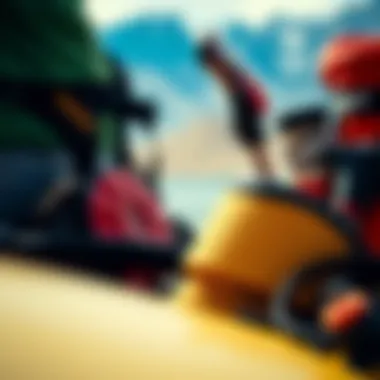
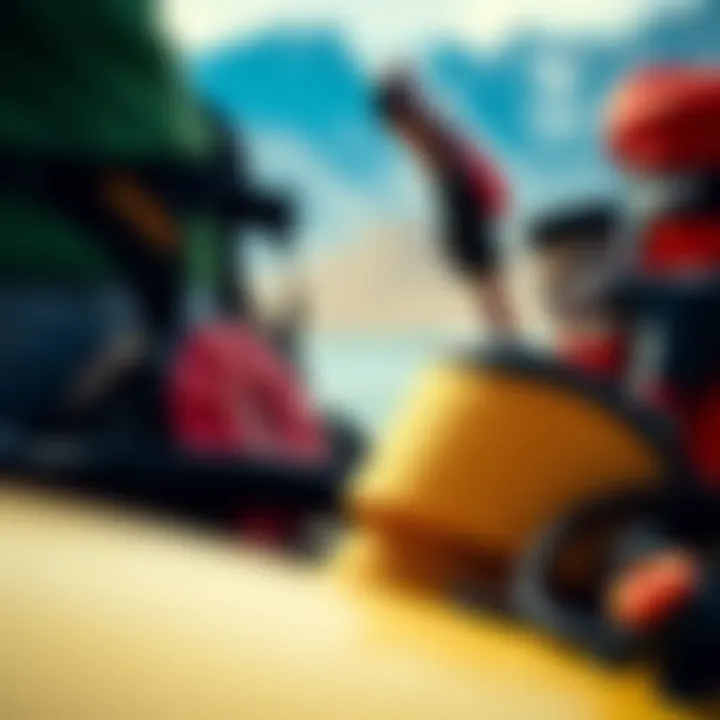
For those seeking the thrill of larger swells, advanced techniques become paramount. Big wave surfing demands both skill and respect for the ocean's power.
- Big Wave Strategy: Surfers need to know how to read conditions. Understanding swell size, wind direction, and currents can make or break your session. This knowledge helps surfers identify which waves to ride and where to position themselves.
- Tow-In Surfing: For exceptionally large waves, paddling might not suffice. Tow-in surfing, where a jet ski pulls the surfer into the wave, is used for extreme conditions. Mastering this technique requires coordination and experience.
- Safety and Spotting: Advanced surfers should always keep an eye on their peers, especially in crowded lineup spots. Knowing when to shout a warning or assist a fellow surfer in distress is crucial. Safety and community are as much a part of surfing as the ride itself.
In summary, these surfing techniques are not just steps on a checklist; they are gateways to understanding a sport that blends art, science, and nature into one. As the waves crash against the shores of Patagonia, mastering these techniques allows surfers to forge deeper connections with the ocean while elevating their surfing experience.
Essential Surfing Equipment
When it comes to getting in the waves of Patagonia, packing the right equipment is crucial. The rugged beauty of this region, combined with its diverse surf conditions, calls for surfers to be well-prepared. The ocean can be as forgiving as it is challenging, so having the right gear can make a world of difference in enjoying both safety and performance.
Choosing the Right Surfboard
Picking a surfboard that resonates with your skill level and the local wave conditions is like finding a dance partner; it must be just right for that smooth performance. In Patagonia, where varying wave types can be found, from mellow swells to powerful breaks, the choice of your board matters a lot.
- Shortboard vs Longboard: Shortboards such as the 5'10'' or 6'0'' offer agility and quick turns, ideal for those who have a couple of seasons under their belt. If you're just starting out or prefer a laid-back ride, longer boards like a 9'0'' longboard give you stability and ease in paddling.
- Volume and Shape: The board's volume can affect flotation and ease of paddling. A wider or thicker board is more buoyant, making it simpler to catch waves, while a thinner profile may slice through the water more efficiently.
- Materials: Surfboards made of epoxy are often lighter and more durable, whereas traditional polyurethane boards provide a classic feel and responsiveness. Choose what suits your surfing style; it's all about alignment with your vibes.
Tip: Rent a board or two when you first arrive. Testing different shapes can help you settle on the one that fits just right.
Wetsuits and Gear Considerations
Diving into the icy waters of Patagonia is no small feat. The proper wetsuit not only protects you from cold temperatures but also offers buoyancy and comfort while you're riding those waves.
- Thickness and Suit Type: Look for a wetsuit that’s at least 4/3mm thick for Patagonia, especially out in winter when temperatures can drop significantly. A full suit with a hood can keep you warm and cozy.
- Neoprene Quality: Not all wetsuits are created equal. Higher quality neoprene materials flex better, allowing for easier movement. Investing a little more can make your surf sessions vastly more enjoyable.
- Extras: Consider accessories like booties, gloves, and hoods. They can sound excessive, but they can keep you warm during extended sessions, enhancing comfort and performance on colder days.
- Maintenance: After getting back from your daily surf, make sure to rinse your wetsuit in fresh water. This simple act can prolong its lifespan, keeping it in top shape for your next adventure.
In Patagonia's dynamic surf environment, having the right equipment can turn even the choppy seas into a joyous experience. Investing time and care into understanding what you need is essential; it ensures that when you hit the waves, you're not just surfing but truly connecting with the untamed spirit of Patagonia.
Environmental Considerations in Surfing
Surfing in Patagonia offers an exhilarating experience, but it comes with responsibilities. Acknowledging the environmental considerations within this breathtaking region is essential to ensure its beauty and biodiversity endure for future generations. By understanding our impact on the environment, surfers can enjoy this vibrant culture while championing its sustainability.
Respecting Local Wildlife
Patagonia is a treasure trove of unique wildlife which deserves our utmost respect. The coasts are home to various species, from lively sea lions to majestic whales. As surfers, our safety is often paramount, but it should never eclipse the need to preserve the natural habitats of these creatures. When paddling out for a session, always be aware of your surroundings.
- Keep your distance: If you happen to spot wildlife, refrain from getting too close. Disturbing their space can lead to stress for the animals, disrupting their natural behavior.
- Educate yourself: Familiarize yourself with local species and their habitats. This knowledge not only enriches your experience but also enhances your appreciation for the environment.
In many areas, particularly at Punta de Lobos and other popular surf spots, volunteers and local organizations educate surfers about wildlife preservation efforts. Joining these initiatives can deepen your bond with both the waves and the local community.
"To be a surfer is not just to ride the waves; it is to tread carefully in nature's domain."
Minimizing Water Pollution
The pristine waters of Patagonia are breathtaking but vulnerable. As surf enthusiasts, we often enjoy nature's raw beauty, yet even minor actions can have significant repercussions. Thus, minimizing water pollution is paramount, and it can be accomplished through simple yet effective practices.
- Be mindful of waste: Always pack out what you pack in. This includes food wrappers, plastic bottles, and any other debris. Consider bringing reusable containers and utensils to help cut down on single-use plastics.
- Choose eco-friendly products: From sunscreens to surf wax, opt for products that don’t contribute to pollution. Many brands now offer biodegradable wax and reef-safe sunscreens that protect both your skin and the ocean.
- Advocate for clean waters: Participate in local clean-ups or support organizations working to combat pollution. The act of engaging with others striving for the same goal can create a ripple effect within the community, further emphasizing the importance of protecting Patagonia's natural beauty.
These steps are not only crucial for preserving the local ecosystem but will also enhance your surfing experience in the long run. A cleaner environment means better waves and healthier wildlife.
In summary, combining a love for surfing with care for the environment creates a powerful synergy that benefits everyone. Each surfer has a role to play in this grand narrative, engaging with nature while ensuring its survival. The ocean is generous, but we must reciprocate with respect and care.
Cultural Aspects of Surfing in Patagonia
Surfing in Patagonia isn't merely about catching the perfect wave; it embodies an intricate lifestyle woven into the local fabric. Embracing elements like community, tradition, and respect for nature shapes the unique cultural landscape of this region. This section sheds light on the nuances of local surf culture and the influences of indigenous practices, both of which enhance the overall surfing experience and provide deeper insights into the people’s relationship with the ocean.
Local Surf Culture
Local surf culture in Patagonia springs from a confluence of adventure and respect for the environment. Surfers here often share stories as much as they share waves. With varying skill levels embracing the surf scene, there’s a mutual respect among surfers rooted in a shared passion for the ocean. Local surf shops, such as Punta Surf Shop and Surf Patagonia, serve as community hubs where both a novice and a seasoned pro can seek gear, advice, and companionship.
One noteworthy aspect of this culture is the inclusive nature of surfing events. Local competitions not only showcase talented surfers but also foster connections among participants and spectators alike. These gatherings highlight the vibrant spirit of camaraderie and solidarity. Moreover, many surf spots are often found near small towns, enabling surfers to engage directly with the local community. The laid-back vibe encourages a sense of belonging that acts as a draw for repeat visitors.
The locals often say, "You might come for the waves, but you stay for the people."
In Patagonia, surfers are conscious of their responsibility toward the environment. They engage in beach clean-ups and conservation efforts, ensuring that the beauty of their surf spots remains intact for generations to come. This ethos resonates strongly with new surfers who immediately grasp the importance of being stewards of the landscapes they embrace.
Influences of Indigenous Practices
The wisdom of indigenous practices profoundly influences the surfing culture in Patagonia, enriching the overall experience for surfers and travelers alike. Local tribes, such as the Mapuche, have a long-standing connection with the land and sea. Their philosophies underscore respect for nature and emphasize harmonious coexistence.
This respect translates into various aspects of surfing, from the materials used in surfboards to the rituals observed before heading into the water. For instance, several locals advocate for sustainable materials and traditional crafting techniques inspired by indigenous craftsmanship.
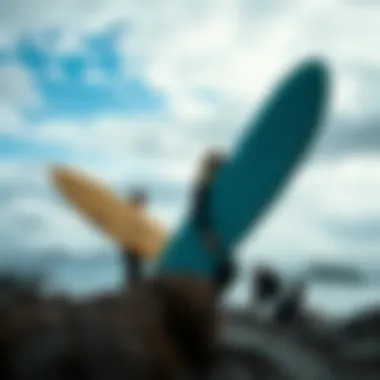
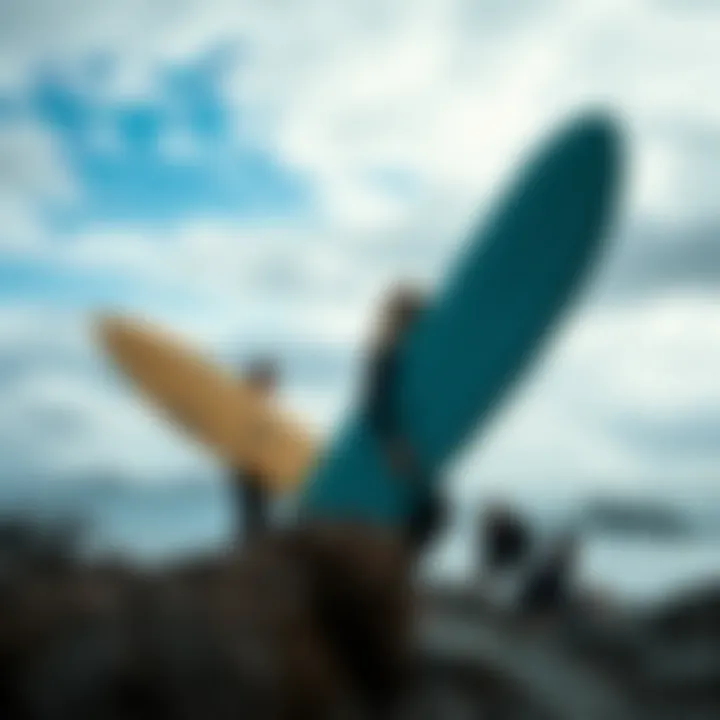
- The influence of these practices can be seen in:
- Board designs that incorporate natural elements.
- Eco-friendly waxing techniques using traditional plant-based substances.
- Rituals of gratitude offered to the ocean before surfing.
Surfers often find themselves drawn to these traditions, recognizing the spiritual aspect of riding the waves and the intrinsic connection with Mother Earth. Engaging with local indigenous communities through workshops and cultural exchanges not only expands a surfer’s understanding but also nurtures the spirit of respect and admiration for the land.
As Patagonia continues to evolve as a surf destination, the fusion of modern surfing practices with indigenous wisdom promises a richer, more respectful surfing culture, making each wave a journey into the heart of this extraordinary region.
Travel Tips for Surfers in Patagonia
When planning a surf trip to Patagonia, knowing the ins and outs can be the difference between a great adventure and a misadventure. The region, while stunning and rich in culture, comes with unique challenges. Here's a comprehensive look at some travel tips that every surfer should know before diving into the waves of this remarkable area.
Best Times to Visit
To make the most of your surf trip, timing is everything, and Patagonia has its rhythm. The surfing season generally spans from late spring to early autumn – think November to April. During these months, wave conditions can be quite favorable.
- Summer months (December to March): Expect warm weather and consistent swells. The south-west winds pick up in these months, making the waves particularly lively. However, be prepared as crowds tend to swell, especially in popular spots like Punta de Lobos.
- Shoulder seasons (November and April): While it can be a bit chillier, the benefits are less crowded beaches and often better deals on accommodations and rentals. The waves can still be robust, rewarding those willing to brave the cooler temperatures.
- Winter months (June to August): If you're a thrill-seeker looking for the big days, winter might be your friend. However, remember that temperatures drop significantly and surfing can be more hazardous due to heavy storms. Only the most seasoned surfers should venture out in these conditions.
Overall, checking extended forecasts and getting local insights can be pivotal.
Navigating Transportation
Transportation in Patagonia can be as diverse as the landscape itself. Here are a few options to help you get around:
- Renting a Car: This is often the most flexible option. Having a vehicle allows surfers to explore remote spots at their own pace. However, be mindful that roads can be rugged, and some areas might require a 4x4.
- Buses: Another viable choice for those on a budget. Buses regularly connect major towns, but schedule constraints might limit flexibility. A little patience goes a long way here.
- Local Taxis and Rideshares: In bigger towns, like Puerto Madryn or Punta Arenas, taxis and rideshares can be a quick and practical solution for short distances.
Tip: Always keep cash handy. Some places may not accept credit cards, especially in more remote regions.
In summary, whether you’re navigating the coastlines or heading inland for a new surf location, being prepared will ensure you spend more time riding the waves rather than figuring out logistics.
Community Impact of Surfing
The community impact of surfing in Patagonia encompasses both the cultural and social dynamics that arise when wave riders gather in this stunning region. The traditional narrative often zeros in on the waves themselves and the thrill of riding, while the reality is far richer, weaving through the relationships formed, the ethos shared, and the initiatives sparked by the local community. Surfing does not just exist as a sport here; it thrives as a way of life that intertwines with the environment and people, fostering connections that are indispensable for both surfers and local inhabitants.
Building Local Networks
The significance of building local networks in the surfing community cannot be overstated. When surfers from around the globe converge on Patagonia’s shores, they engage in more than just catching waves. These interactions typically lead to friendships that extend beyond the surf. Local connections are often formed through surf schools, rental shops, and communal events that embody the friendly spirit of Patagonia. Casual meet-ups at beaches often result in surfers sharing tips about not just surfing but also about navigating the unique challenges of the area.
Take, for instance, the phenomenon of surfers collaborating with local artisans. Surfers looking for high-quality makeshift boards sometimes turn to local craftsmen who shape boards using traditional methods passed down through generations. This not only enhances the surfer’s experience but also supports the local economy. Such relationships foster a healthier ecosystem where skill exchange becomes common, enriching the surfing culture while preserving indigenous craftsmanship.
"When you connect with locals, you learn their ways and gain a respect for their land that isn’t taught in any book. It’s a different ride altogether."
— Surf instructor in Patagonia.
Additionally, these networks often spearhead initiatives to protect surf spots and local habitats. Knowledge sharing becomes an essential practice, where surfers educate one another about the best times to surf, the nuances of weather patterns, and safety measures. This social aspect promotes a sense of belonging, where everyone has a role in caring for the environment they love.
Sustainability Initiatives
In recent years, sustainability initiatives within the surfing community have taken center stage in Patagonia. With emerging waves of eco-conscious surfers, there's been a revitalization of awareness surrounding environmental issues that plague many coastal areas. Surfers have begun to champion eco-friendly practices by organizing clean-up days at popular surf spots like Punta de Lobos or Playa La Cueva.
These clean-up events highlight the surfers’ commitment to maintaining the pristine condition of the beaches. It’s a collaborative effort, often bringing together not only surfers but also locals, travelers, and environmental groups. Such events can lead to a greater understanding of how pollution -- be it plastic waste or oil spills -- can drastically alter the surfing experience.
Moreover, many local surf schools and rental shops are now transitioning toward sustainable practices.
- Eco-friendly surfboards made from sustainable materials are becoming increasingly accessible.
- Biodegradable wetsuits are gaining traction in the market, catering to environmental consumers who want to enjoy surfing while respecting the ocean.
- Programs promoting local plants as natural barriers to combat erosion are being put into place, ensuring the coastline stays intact for future generations.
Future of Surfing in Patagonia
The future of surfing in Patagonia is not just about catching waves; it's a reflection of the evolution of a culture deeply intertwined with nature. As this rugged coastline continues to attract surfers, there's a growing recognition of the responsibility that comes with enjoying such spectacular environments. This section focuses on emerging trends and the prospects for surf tourism in this pristine region, emphasizing the sustainable practices that are vital for the longevity of both the sport and the landscapes enjoyed by so many.
Emerging Trends
Surfing in Patagonia is witnessing several noteworthy trends that could shape its future. From eco-friendly surfboards to community-based surf schools, the scene is diversifying in ways that resonate with the modern surfer's ethos.
- Eco-Conscious Gear: More surfers are opting for environmentally friendly surfboards made from sustainable materials. Brands like Firewire offer boards that utilize recycled materials and avoid toxic chemicals. This trend aligns with a broader movement towards greener lifestyles.
- Localism: With increased global attention, local surfers are advocating for peak time management to balance between visitors and resident surfers. This movement nurtures community ties and ensures that everyone can enjoy the waves while preserving local culture.
- Digital Nomad Surfers: The rise of remote work has seen many surfers become digital nomads, using technology to blend work with their passion. Patagonia’s breathtaking settings provide the perfect backdrop for working while exploring various surf spots.
- The Growth of Women in Surfing: An increased focus on female surfers is reshaping the landscape, encouraging more events and support systems for women in the sport, fostering a more inclusive surfing community.
These trends point towards a community that is not only passionate about surfing but also aware of the importance of preserving their environment and culture.
Prospects for Surf Tourism
Surf tourism in Patagonia has immense potential for growth, driven by a combination of unique geography, rich culture, and the increasing global inclination towards adventure travel. Here's what makes its prospects promising:
- Untapped Potential: Compared to more established surf destinations, Patagonia remains relatively undiscovered, offering a unique experience. This creates opportunities for surfers looking for less crowded conditions.
- Adventure Packages: Tour operators are beginning to develop unique surf tours combining local culture with surfing, such as visits to indigenous sites or guided nature experiences, enhancing the appeal for adventurous travelers.
- Infrastructural Development: Improvements in accessibility, such as better transportation options and accommodations tailored for surfers, are on the rise. These changes will draw more surf enthusiasts eager to discover Patagonia's hidden gems.
- Community Engagement: Successful tourism will require involvement from local communities. By investing in local businesses and sustainable practices, surf tourism can thrive while maintaining the integrity of Patagonian culture and natural beauty.
Surfing in Patagonia is more than just a sport; it's an engagement with nature, culture, and responsibility.
As surfers, travelers, and outdoor enthusiasts gravitate towards Patagonia, they’ll not only be riding waves but also actively participating in conversations about sustainability and community welfare. The future of surfing here promises to be one that embraces both challenge and opportunity, ensuring that this corner of the world remains a premier destination for riders who value more than just the thrill.



